- DroidAfrica
- Gadgets
- Tecno
- Tecno Camon 17 Pro
Tecno Camon 17 Pro

Tecno Camon 17 Pro Highlights and Overview
The Tecno Camon 17 Pro is the direct successor to the Camon 16 Pro of last year. Unlike the other models in the Camon 17-series, this unit has a more stronger Helio G95 gaming CPU, and sport a large display as well. Talking about display, the Camon 17 Pro comes in a 6.8-inches display, with a 1080 x 2460 pixels res. The screen is endowed with 90Hz refresh, and there is a centralized notch housing the selfie camera.
On the inside, there is the aforementioned Helio G95 octa-core CPU from MediaTek. This SoC has dual-core 2.05 GHz Cortex-A76 & six-core 2.0 GHz Cortex-A55, pegged with Mali-G76 MC4 graphic processor. 8GB RAM with 256GB ROM is the only storage option available. Like the other models in the Camon 17-series, the Pro model runs Google Android 11 with HiOS v7.6 out of the box.
As for the camera department, the model has four lens on the back; this includes a 64-megapixel main lens, 8-megapixel ultrawide snapper, 2-megapixel depth lens and a fourth 2-megapixel B/W lens, along with four LED flashes on the rear. For selfie, the 17 Pro is offering a large 48-megapixel snapper on the front, coupled with dual LED flashes for better lowlight selfie images.
Additionally, the Camon 17 Pro has a side-placed fingerprint scanner, and come with space for dual Nano-SIM with 4G LTE network on both SIMs. Interestingly, the model also offers a large 5000mAh battery with 25W fast charging, and come with dual stereo speakers for the audiophiles. The full specs of the Tecno Camon 17 Pro is contained in the table below.
Tecno Camon 17 Pro Full Specifications and Features
NETWORK
| Technology | GSM / HSPA / LTE |
| 2G Network Bands | GSM 850 / 900 / 1800 / 1900 - SIM 1 & SIM 2 |
| 3G Network Bands | HSPA 42.2/11.5 Mbps, LTE-A (2CA) Cat6 300/75 Mbps |
| 4G Network Bands | LTE band 1(2100), 3(1800), 5(850), 8(900), 38(2600), 40(2300), 41(2500) |
| 5G Network Bands | Does not have support for 5G Network |
| Speed | HSPA 42.2/11.5 Mbps, LTE-A (2CA) Cat6 300/75 Mbps |
LAUNCH
| Also Known As |
- - |
BODY
| Dimensions | 168.89 x 76.98 x 8.95 mm |
| Weight | --- |
| Build |
Glass front - Plastic back - Plastic frame |
| SIM Type | Dual SIM (Nano-SIM, dual stand-by) |
DISPLAY
| Display Type | IPS LCD capacitive touchscreen, 16M colors |
| Size | 6.82-inches, 102.0 cm2 (~84.1% screen-to-body ratio) |
| Resolution | 1080 x 2460 pixels, 20.5:9 ratio (~405 ppi density) |
PLATFORM
| Operating System | Android 11; HiOS v7.6 |
| Chipset | Mediatek MT6785 Helio G95 (12 nm) |
| CPU | Octa-core (2x2.05 GHz Cortex-A76 & 6x2.0 GHz Cortex-A55) |
| GPU | Mali-G76 MC4 |
MEMORY
| RAM + ROM | 8 GB |
| Card Slot | Yes, up to 256 GB via microSD card (uses dedicated slot) |
MAIN CAMERA
| Camera Type | Triple Lenses |
| Camera Sensor(s) |
Main: 64 MP, f/1.8, 26mm, 1/1.97", 0.7µm, PDAF Ultrawide: 8 MP, f/2.2, 118˚, 1/4.0", 1.12µm Depth: 2 MP, f/2.4, Depth: 2 MP, f/2.4, |
| Camera Features |
Autofocus Continuous shooting Digital zoom Digital image stabilization Geotagging Panorama HDR Touch focus Face detection Self-timer Scene mode Macro mode 4K Time Lapse |
| Video Resolution | 4K@30fps, 1080p@30/60fps |
SELFIE CAMERA
| Camera Type | Single Lens |
| Camera Sensor(s) | 48-megapixel |
| Camera Features |
f/2.0 aperture Autofocus AI faceID |
| Video Resolution | 1080p@30fps |
SOUND
| Loudspeaker | Yes, with dual stereo speakers |
| Speaker Location | Chin, below display |
| Audio Jack Type | Yes, 3.5mm audio jack, |
CONNECTIVITY
| Bluetooth | Bluetooth 5.0, A2DP, LE, aptX HD |
| NFC | |
| GPS | Yes, with dual-band A-GPS, GLONASS, BDS, GALILEO, QZSS |
| FM Radio | No |
BATTERY
| Battery Capacity | Non-removable Li-Po 5000 mAh battery |
OTHER FEATURES
| Sensors | Fingerprint (side-mounted), accelerometer, proximity, compass |
| Box Contents | Charging Brick / USB cable |
Tecno Camon 17 Pro User Reviews and Opinions
LEAVE A REPLY
Disclaimer Note
We CANNOT guarantee 100% accuracy for the specification table above.

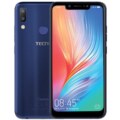
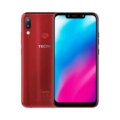
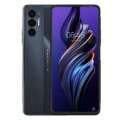
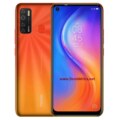
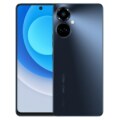
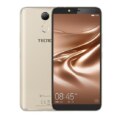






Seem to a very excellent product. Am interested in it but they when is found. Am in Namibia. My WhatsApp number is +264 82 3282600
When is it arriving in Kenya
Where can i get it in Nigeria
You can either buy it online, or visit any certified Tecno store like Slot, pointech 3CHub etc, that is close to you.
09017142361 we deliver
Pls,how can I get it now am in ijebu ode, ogun state.
Call me we deliver 09017142361
Please, i wanna know the price of the phone.
Please,i wanna know the price of phone cause it’s interesting 1.